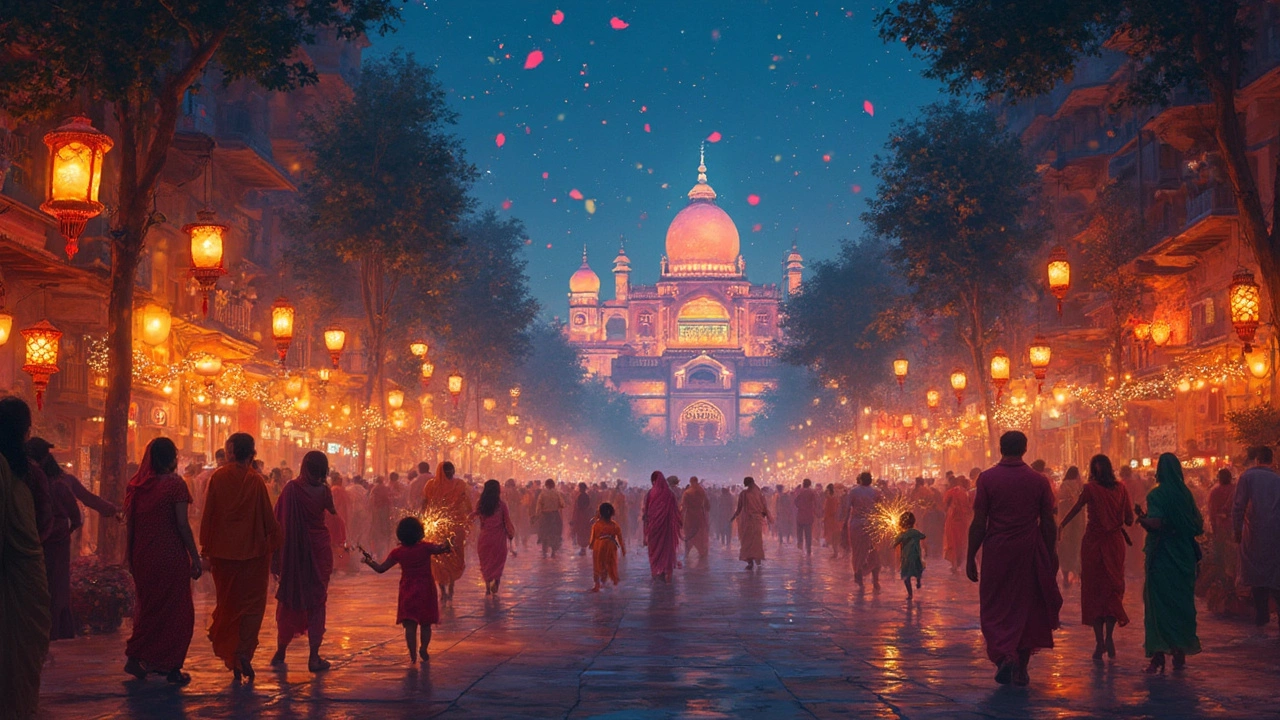SEARCH
Top Festivals in India – Your Quick Guide to the Best Celebrations
If you love color, music, and food, Indian festivals are the perfect way to feel the pulse of the country. Each celebration tells a story, brings locals together, and offers travelers a chance to join the fun. Below you’ll find the biggest festivals, the best times to visit, and practical tips to make the most of every event.
Why Indian festivals are a must‑see
Festivals in India are more than just parties; they are living traditions that blend history, religion, and regional pride. From street parades to temple processions, you get to see authentic customs that you won’t find anywhere else. The energy is contagious – you’ll hear drums, smell fresh sweets, and see streets lit up with lanterns. For a traveler, joining a festival feels like stepping inside a story.
Top 5 festivals you shouldn’t miss
1. Diwali (Festival of Lights) – October‑November. Whole towns sparkle with oil lamps, fireworks, and vibrant rangoli designs. Shop for sweets, watch fireworks from a rooftop, and try the traditional thali. Book accommodation early in major cities; rooms fill up fast.
2. Holi (Colour Festival) – March. Expect clouds of pink, green, and yellow powder flying everywhere. The best spots are Mathura, Vrindavan, and the streets of Jaipur. Wear white clothes you don’t mind getting stained, carry water bottles, and keep your phone in a zip‑lock bag.
3. Durga Puja – September‑October, mainly in West Bengal. Massive, beautifully crafted idols line the streets, and cultural shows run all night. Kolkata’s Kumartuli district offers close‑up views of the art. Arrive by train early to avoid crowd crushes.
4. Pushkar Camel Fair – November. This isn’t a religious festival but a massive livestock market that turns the desert town of Pushkar into a bustling fairground. Camel races, folk music, and colorful stalls make it a photographer’s dream. Stay in tents or budget hotels for the full experience.
5. Onam – August‑September in Kerala. The state celebrates its harvest with boat races, flower carpets, and a grand feast called ‘Onam Sadya.’ Watch the spectacular snake‑boat races on the backwaters and try the vegetarian dishes served on banana leaves.
Each festival has its own peak days, so check the local calendar before you book. Weather can vary a lot – Holi is hot, while Pushkar can be chilly at night. Pack accordingly.
Getting around is easy with India’s train network, but for remote festivals like Pushkar, a hired car or shared taxi is more reliable. Book tickets on the Indian Railways website or use a reputable bus operator. Always keep a copy of your ID and a small amount of cash for local vendors.
When you join a celebration, respect local customs. Remove shoes before entering a temple, ask before photographing people, and follow any dress codes. Most locals are happy to explain the meaning behind rituals – a quick chat can add depth to your experience.
Food is a highlight at every festival. Look for street stalls serving fresh sweets like jalebi, gulab jamun, and regional specialties. If you have a sensitive stomach, eat at busy stalls where turnover is high – the food is usually fresher.
Safety-wise, keep an eye on your belongings, especially in crowded areas. Use a money belt, avoid flashing expensive gadgets, and stay with a group if possible. Most festivals have police presence, but staying alert never hurts.
Finally, plan a flexible itinerary. Festivals can cause road closures or changes in public transport schedules. Allow extra travel time, and consider spending a night or two in the festival town to soak up the atmosphere without rushing.
With the right preparation, Indian festivals turn a regular trip into a vivid, unforgettable adventure. Bring an open mind, a camera, and a willingness to dance – you’ll leave with stories you’ll tell for years.

Top Festival in India: Dive into Divali
Discover why Diwali is celebrated as the top festival in India. Learn about its significance, customs, and how it lights up towns and cities across India as well as temple visits and rituals. Diwali's charm doesn't just lie in its bright lights; it's a cultural phenomenon that brings people together. This article provides practical tips and cultural insights to make the most of Diwali celebrations.
Continue reading